What Are Bioplastics? Definition, Applications, Advantages, and Limitations
Bioplastics are plastics that are either made from renewable raw materials or are biodegradable - or both. They offer a wide range of possible applications - but what exactly are bioplastics, how are they produced and what advantages or limitations do they have compared to traditional plastics?

Sarah Guaglianone
4. Juni 2025
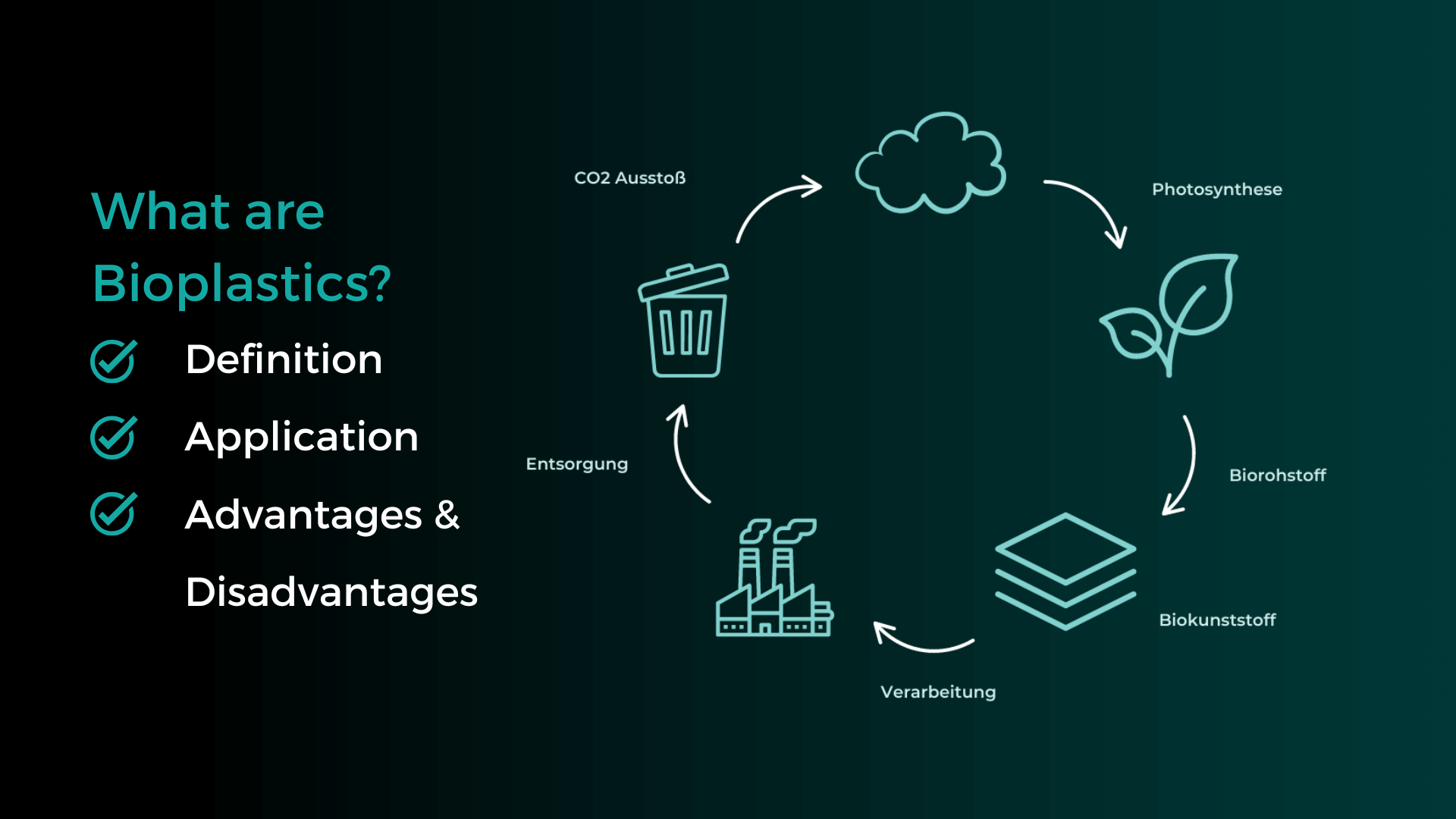
Contents
What are bioplastics?
Bioplastics explained simply: Bioplastics, also known as bioplastics or technical biopolymers, are plastics that are either completely or partially made from renewable raw materials, i.e. biobased and/or biodegradable. In comparison, conventional plastic materials are based on fossil raw materials.
What types of bioplastics are there?
Bioplastics can primarily be divided into two main categories: Bio-based and biodegradable plastics. In the following section, we present some examples of bioplastics to give you an overview of the different types of bioplastics.
Biobased plastics
What does bio-based mean? Bio-based plastics are made from biological, renewable raw materials such as corn starch, sugar cane or cellulose. Bio-based bioplastics are not necessarily biodegradable.
Bioplastic properties, such as mouldability, hardness, elasticity, breaking strength, temperature resistance, heat resistance and chemical resistance, vary depending on the composition, manufacturing process and the addition of additives.
Bioplastics Overview: Bio-based plastics
- Polylactic acid (PLA): Made from fermented plant starch and biodegradable.
- Bio-polyethylene (bio-PE): Made from sugar cane and not biodegradable.
- Bio-polyethylene terephthalate (bio-PET): Partly made from renewable raw materials (e.g. ethanol from sugar cane). Chemically identical to conventional polyethylene, therefore not biodegradable.
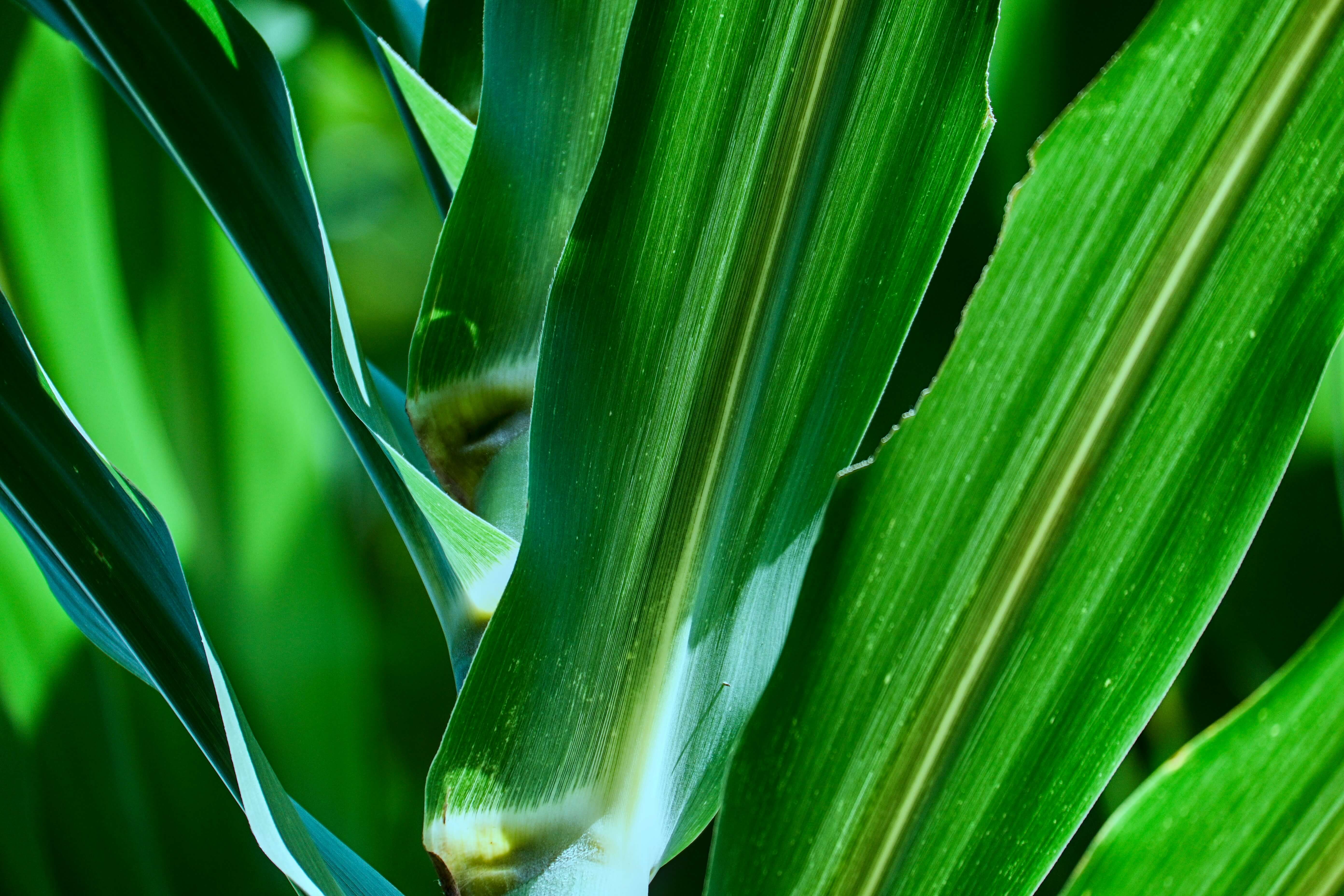
Biodegradable plastics
Biodegradable plastics are produced by natural processes (microorganisms such as bacteria or fungi), which can be broken down into natural substances such as water, carbon dioxide (CO2) and biomass. Bioplastics degrade under certain environmental conditions that are necessary for the activity of the microorganisms (more on this later).
Bioplastics overview: Biodegradable plastics
- Polyhydroxyalkanoates (PHA): Fermented by bacteria.
- Polybutylene succinate (PBS): Can be produced from renewable or fossil raw materials.
- Polycaprolactone (PCL): Made from fossil raw materials.
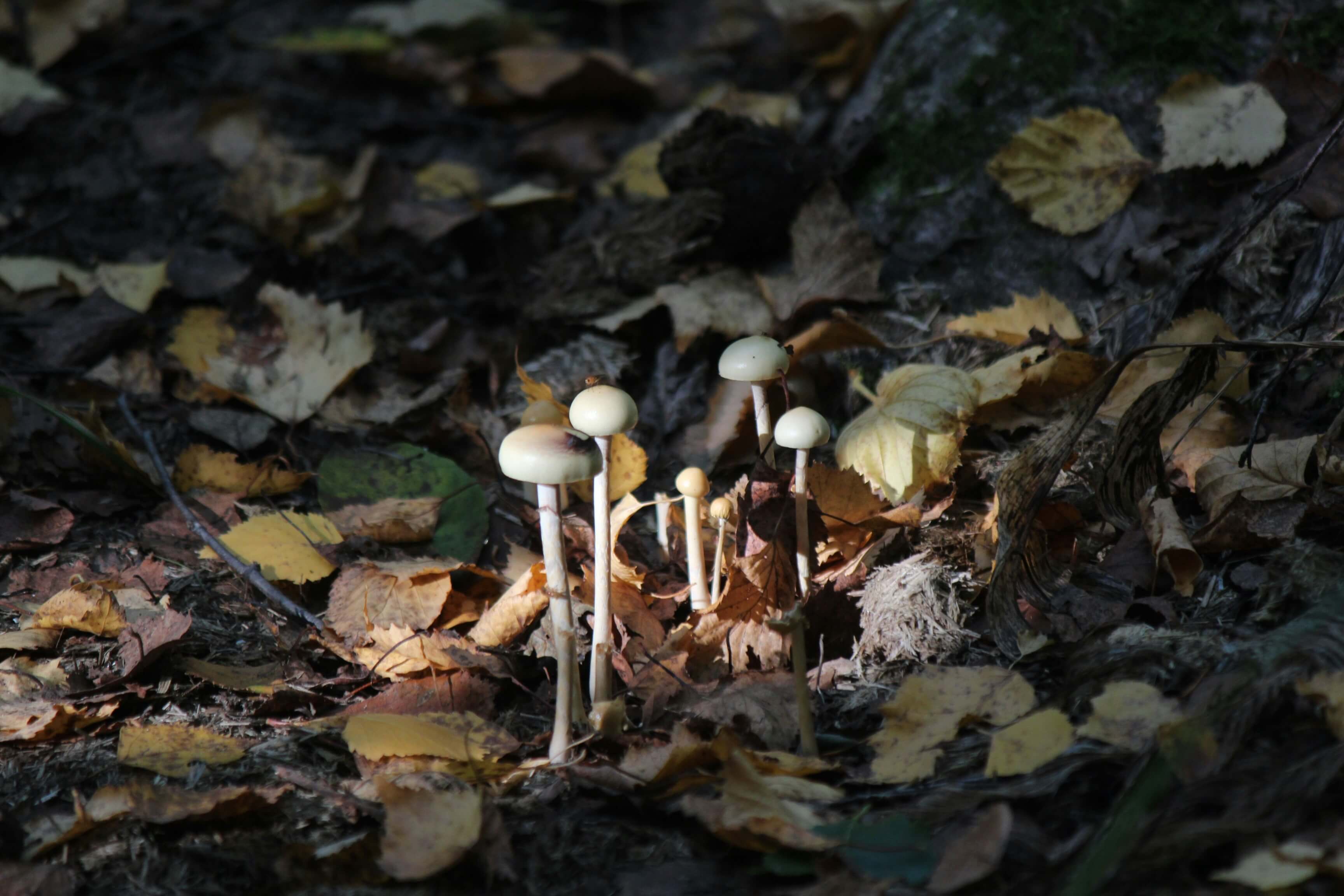
Bioplastics overview: Bio-based and biodegradable plastics
Some bioplastics fulfil both criteria: The biopolymers are both biobased and biodegradable.
- Polylactic acid (PLA): Made from plant starch and biodegradable.
- Polyhydroxyalkanoates (PHA): Fermented by bacteria from renewable raw materials and biodegradable.
- Starch-based plastics: Made from plant starch and biodegradable.
Overview of all types of bioplastics
| Bioplastics category | Bio-based plastics | Biodegradable plastics | Bio-based and biodegradable plastics |
|---|---|---|---|
| Bioplastics examples | Bio-PE, Bio-PET, PLA | PHA, PBS, PCL | Starch-based plastics, PLA, PHA |
| Raw materials | Renewable raw materials (e.g. sugar cane, plant starch) | Microorganisms, various raw materials | Plant starch, bacteria |
What can bioplastics be used for? - Products made from bioplastics
The properties of bioplastics vary depending on the raw materials used and the manufacturing processes. In principle, bioplastics can have the same properties as conventional polymers. Plastic films made of bioplastics are also produced by plastic extrusion like conventional thermoplastics.
However, bioplastics are not suitable for high-performance applications. The use of bio-based materials is restricted by limited quantities, price and qualities, based on limited raw materials and higher manufacturing costs. Currently, bioplastics can be used primarily for these applications:
Packaging material / agriculture:
Packaging products made from compostable bioplastics, such as trays for vegetables, fruit, eggs and meat, containers for drinks and dairy products and cosmetics packaging.
Medicine / Pharmaceuticals
For bioplastics in medicine and pharmaceuticals, the focus is on the resorbability of the products, such as suture materials or implants, which can be broken down by the body after use.
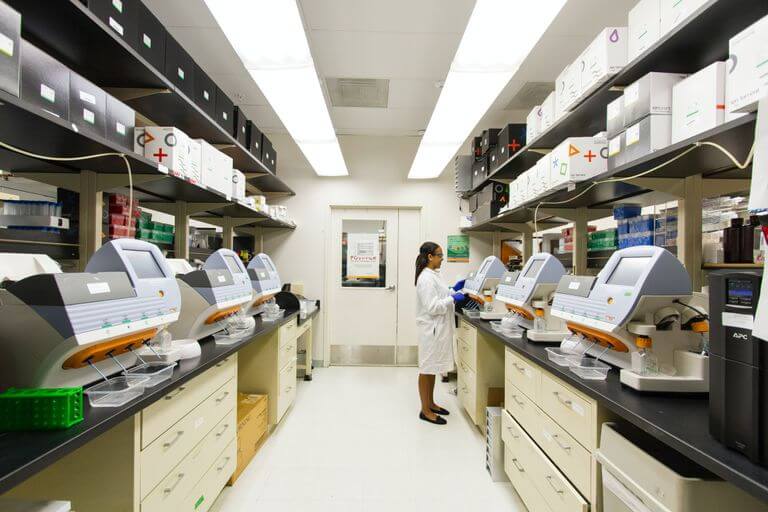
Automotive engineering
Bio-based materials are used in the automotive sector in the "sandwich process". The core of the component is made of bio-based polymer, a layer of a conventional material of higher quality is used on top (e.g. for optics, haptics, functionalities).
Bioplastics vs. plastics: advantages and disadvantages
Bioplastics have advantages and limitations compared to conventional plastics, with the latter affecting their suitability for various applications. Here we take a detailed look at the differences and challenges of bioplastics compared to conventional thermoplastics.
Bioplastics advantages
The use of biopolymers offers a number of advantages, including
Renewable raw materials
Crude oil is a limited raw material. In contrast, renewable raw materials are inexhaustible. This is because bioplastics are made from raw materials such as maize, sugar cane or cellulose, which reduces dependence on fossil fuels.
Potential for lower CO2 emissions
Starch from plants is used for the production of bioplastics. These plants extract CO2 from the atmosphere for their growth. When the bioplastic is incinerated, only the amount of CO2 previously absorbed by the plant is released. This creates a closed CO2 cycle.
Biodegradability
Some bioplastics, such as PLA and PHA, are biodegradable/compostable and decompose under certain conditions (e.g. in industrial composting plants) into harmless substances such as CO2, water and biomass.
Bioplastics disadvantages
Despite the advantages mentioned, however, there are several disadvantages that must be taken into account when assessing their environmental friendliness and practicality. Here are the main challenges and disadvantages of bioplastics in detail.
High land requirements
The cultivation of raw materials for bioplastics requires agricultural land that could also be used for food production. This can lead to competition for agricultural resources.
Energy and resource consumption
Bioplastics = better environment - unfortunately this is not true in terms of energy and resource consumption. The production of bioplastics can be energy-intensive and require high water consumption, which can have a negative impact on their environmental footprint.
Degradation conditions
Many bio-based and biodegradable plastics require special conditions (e.g. industrial composting plants) for degradation, which are not always available everywhere or require energy.
Costs
The prices of bioplastics are often more expensive than conventional plastics, which can limit their widespread use.
Limited recycling options
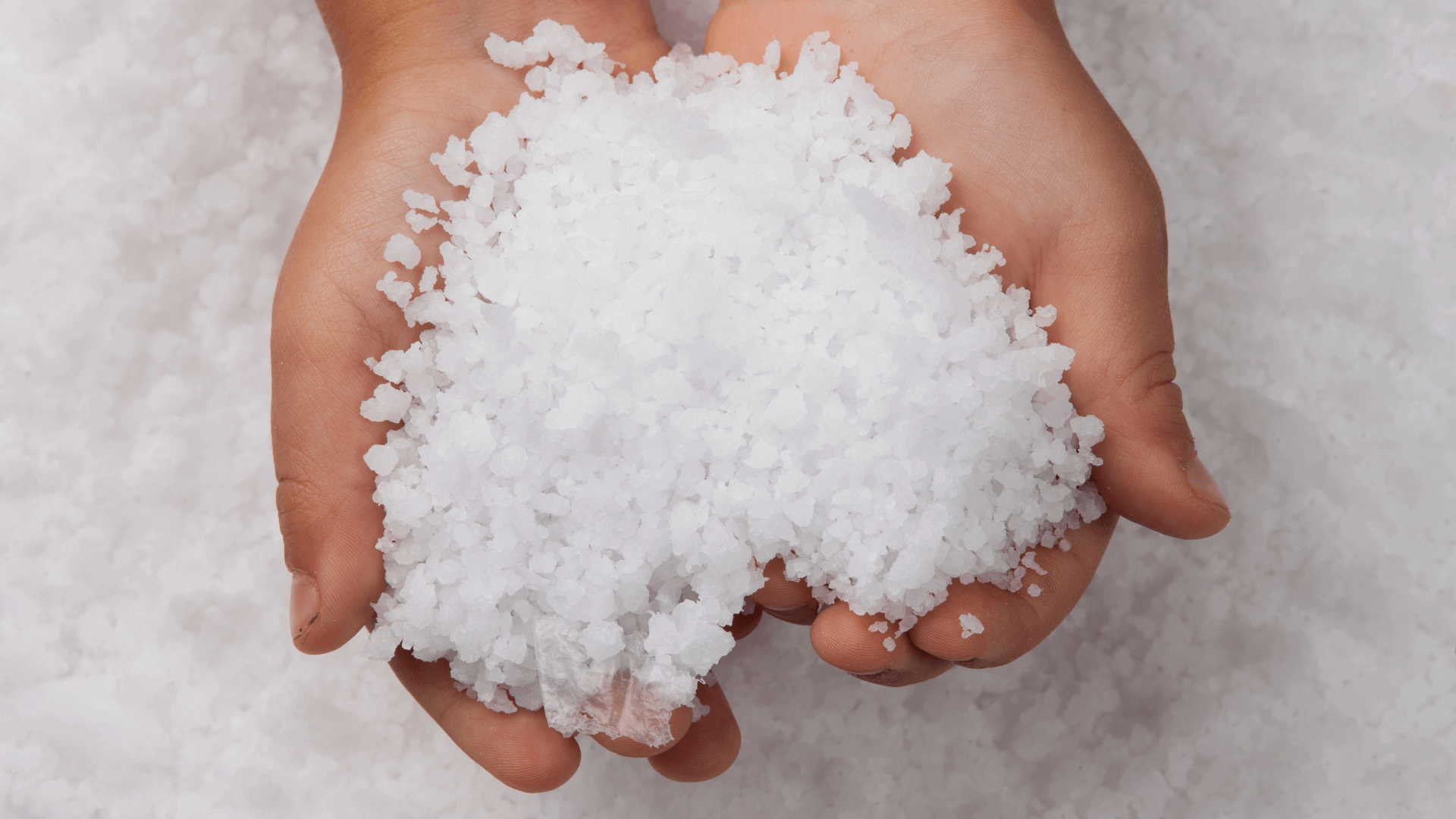
In contrast to conventional recycled plastics, bioplastics cannot be mechanically recycled without special recycling processes that are tailored to the respective material flow. The recycling of bioplastics is therefore difficult, as biodegradable plastics often require a longer retention period in composting plants.
Bioplastics in thermoforming
Can bioplastics now also be used for plastic thermoforming and thus for trays, containers, inlays and covers? And how does bioplastic behave in contrast to conventional thermoplastics? More on this in the next sections.
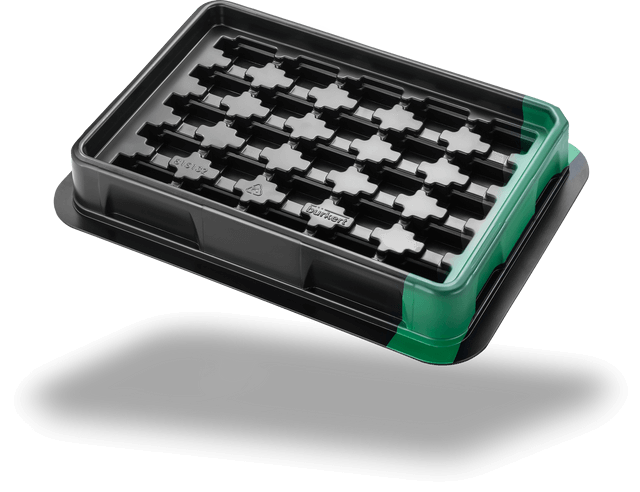
Material properties
Bioplastics have different properties compared to conventional plastics. Some bio-based plastics, such as polylactic acid (PLA) and polyhydroxyalkanoates (PHA), are thermoplastic and can therefore theoretically be used for thermoforming.
However, due to their different structure, bioplastics have special requirements in terms of temperature and processing that may differ from those of conventional plastics. Adapting moulding tools to the specific properties of bioplastics can therefore incur additional costs.
Processing parameters
The processing temperatures and times for bioplastics can vary. PLA, for example, has a lower processing temperature compared to many standard plastics such as polyethylene (PE) or polypropylene (PP).
Some bioplastics are hygroscopic, which means that they absorb moisture from the environment. This can lead to processing problems such as bubble formation or undesirable material changes.
Mechanical properties
Bioplastics often have different mechanical properties than traditional plastics. Some may be less impact resistant or less elastic, which influences the choice of applications. The strength and flexibility must be carefully tested to ensure that the end products meet the requirements.
Is bioplastic an alternative? - A conclusion
The bioplastics market share is currently around 1%. Therefore, the possibilities are far from exhausted when it comes to the use of biopolymers in thermoforming. The advantages of bioplastics are a major factor in utilising them for more applications: Biodegradability, lower CO2 emissions and resource conservation.
However, the use of bioplastics also has its limitations and disadvantages. Not only can bioplastics not keep up with regular thermoplastics when it comes to high-performance applications. Their production can require considerable amounts of agricultural resources.
Biopolymers often require special conditions for decomposition and are not fully degradable in conventional composting plants. In addition, there is currently a lack of efficient recycling processes, which means that incineration remains the most common disposal method. And another important factor: bioplastics are often more expensive to produce than conventional plastics, which reduces their economic attractiveness. However, if the market share of bioplastics grows and exceeds 1%, these aspects could change. We will see what the future holds for the world of bioplastics.
ℹ️ Want to find out more about bioplastics, additives and compounds? Then read our material guide for thermoformed plastic parts or watch our video: